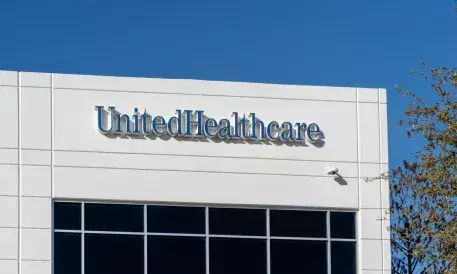UnitedHealth Q3 Results Reveal Deep Crisis in U.S. Healthcare Despite Stock Rebound
UnitedHealth stock rises 4% after Q3 earnings, but soaring costs, Medicare cuts, and political gridlock expose cracks in America’s healthcare system.
UnitedHealth Q3 Results Reveal Deep Crisis in U.S. Healthcare Despite Stock Rebound

UnitedHealth Group’s stock climbed nearly 4% on Tuesday morning, signaling a brief reprieve after months of turbulence. But beneath the surface of its third-quarter “recovery,” the company’s latest earnings highlight a grim truth — America’s healthcare system, both corporate and federal, remains financially unsustainable.
The Bigger Picture: Healthcare Math That Doesn’t Add Up
UnitedHealth’s rebound arrives amid a federal government shutdown, triggered by a Republican-led refusal to extend Affordable Care Act (ACA) premium subsidies. These subsidies currently help around 24 million Americans afford health insurance — and their expiration could send premiums soaring when open enrollment begins on November 1.
House Republicans argue the subsidies are too costly, while Senate Democrats insist they are vital to keeping healthcare accessible. The standoff underscores a larger crisis — rising medical costs and political gridlock are threatening the very foundations of American healthcare.
UnitedHealth Q3 Results: Higher Revenue, Lower Margins
The numbers tell a mixed story. UnitedHealth reported $113.2 billion in Q3 revenue, up 12% year-over-year, and raised its full-year earnings outlook. However, the company’s insurance division, UnitedHealthcare, saw profit margins shrink as spending surged on older and sicker Medicare Advantage members.
The company’s medical care ratio — the percentage of premiums spent on patient care — jumped nearly five points to 89.9%, indicating that higher healthcare utilization is the new normal.
Meanwhile, Optum Health, UnitedHealth’s care services and clinic network, saw earnings plunge 90% due to Medicare rate cuts, even as executives claimed the results were “in line with expectations.”
The Real Diagnosis: Structural Pain
Despite Tuesday’s stock rebound, UnitedHealth shares are still down 35% in 2025, weighed down by rising medical costs and shrinking reimbursement rates. These challenges mirror deeper structural issues — an aging population, medical inflation outpacing wages, and a healthcare model that assumes employers, taxpayers, and patients can keep absorbing higher expenses indefinitely.
As the nation’s healthcare system grapples with these unsustainable pressures, UnitedHealth’s quarterly “recovery” looks less like a turnaround — and more like a warning sign of what’s to come.

